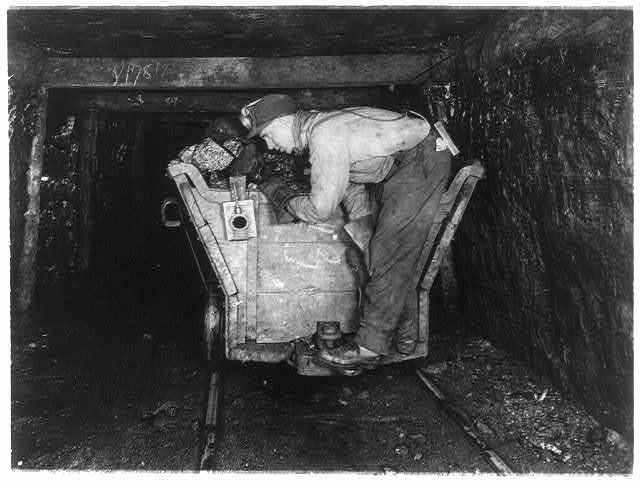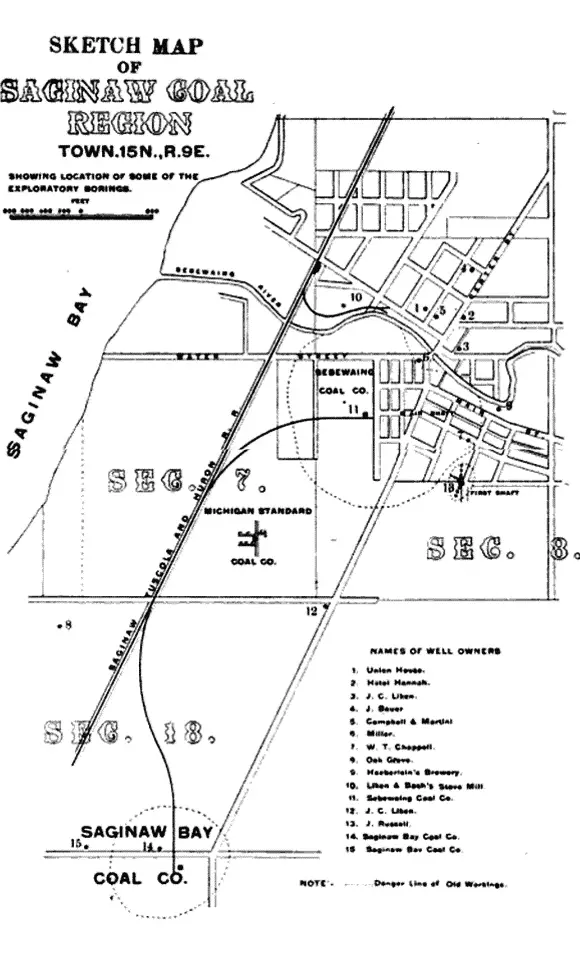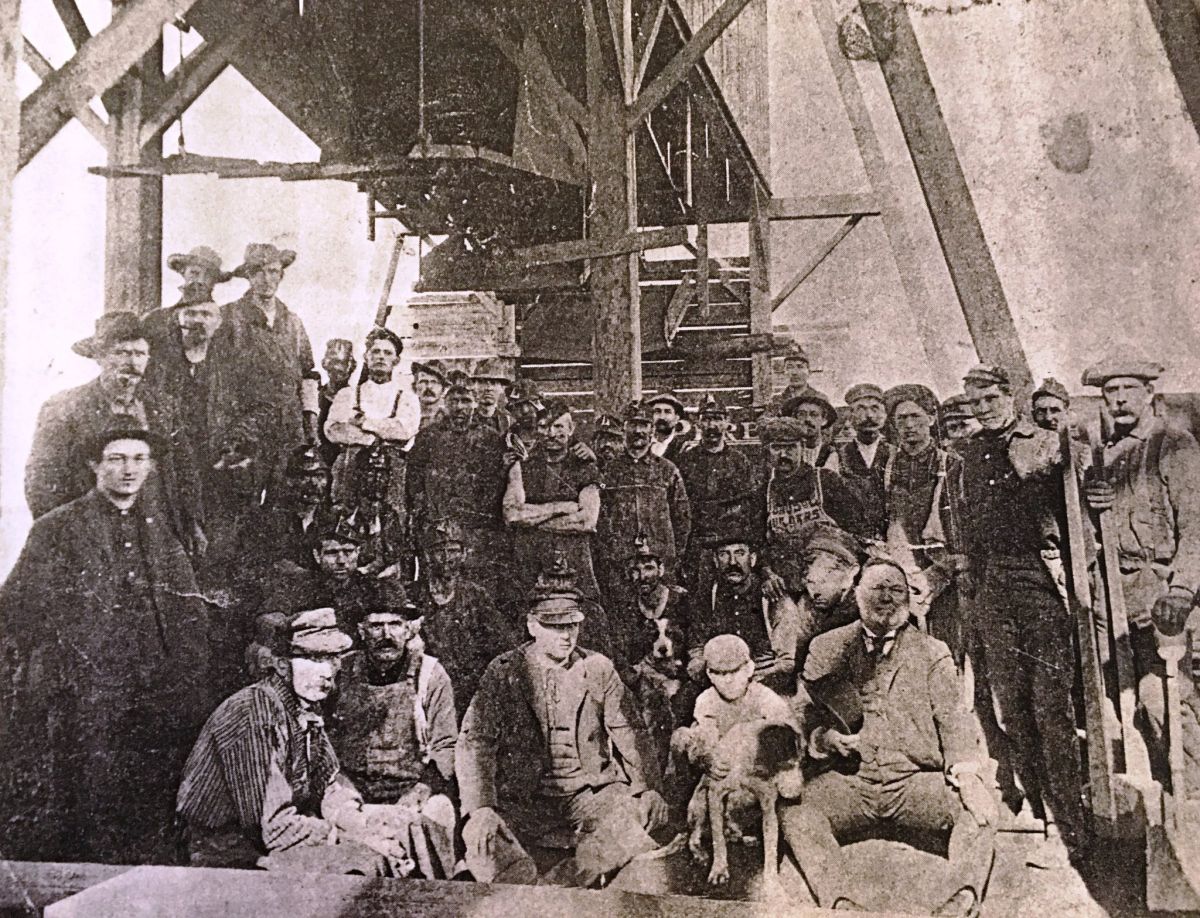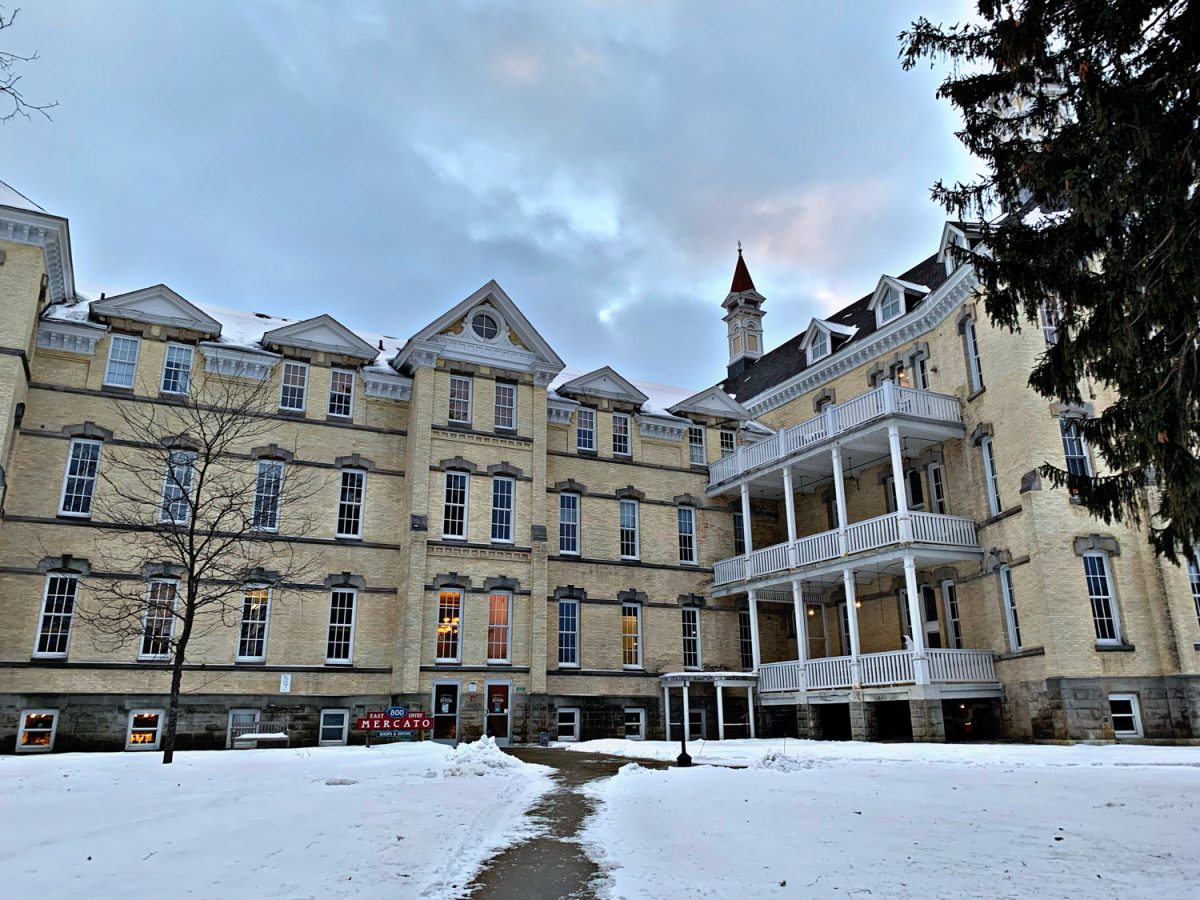The Discovery of surface and shallow Michigan coal veins was a result of grist mill construction in 1835 west of Jackson Michigan. State geologist Douglas Hougton confirmed the existence of coal deposits in 1837. Over the next two decades, local residents took surface coal for personal and local use. After the Civil War, shallow mine shafts were dug all over the Jackson area.

Coal Production in Saginaw
At the northern tip of the Michigan Basin, coal was discovered near Saginaw in the 1850s. During World War I, Michigan coal production peaked with about $7,000,000 worth of coal mined. There were more than 160 coal mines concentrated in the central part of the state, known as the Michigan Basin. The area where the coal was easily accessible and concentrated was in Bay, Saginaw, Tuscola and Genesee Counties. The coal industry started to decline after WWI. The last coal mine to operate was in Saginaw County, the Swan Creek Mine, closed in 1952.
Sebewaing Mines
The discovery of coal in Sebewaing was made by Russell Brothers; well diggers based in Unionville. By the early 1900s, Sebewaing had three coal mines in operation. The Whittier, Sebewaing Coal Company and the Saginaw Bay Coal Company collectively employed about 100 men. Coal was brought to the surface on small mule driven cars on wooden tracks.

Coal mining was successful for only a few years. It seems that initially, the coal was of high quality however as operations continued it seems that the extracted coal contained so much sulfur it was deemed too explosive to be used as a fuel. Thomas Whitter, a chemist from Saginaw inspected the coal vein and found it an excellent source of pyrite and comparable with the pyrite sources then being imported from Spain. Changes were made to the operation that expanded the mining capacity to 400 tons per day. Pyrite ore is an excellent material in which to make sulfur.
The mines around Sebewaing were only two of eight coal mines located in the Saginaw Bay region. The coal strikes were usually recorded by those drilling exploratory wells looking for salt brine. The veins of coal were from 3 to six feet and the deepest was found at 350 feet.
Other Coal Mines in Michigan
- Bay Coal Mining Company
- Saginaw Coal Company
- J. H. Somers Coal Company
- The Verne Mine
- Standard Mining Company
- Hampton Coal Mining Company
- Saginaw Valley Mining Co
The Michigan Department of Environment, Great Lakes and Energy still have jurisdiction over coal mining in the state. However, coal reclamation projects are limited to cases where construction projects encounter a coal seam. Abandoned mineshafts present a problem, especially in Saginaw County.
Michigan CoalSources Consulted
Photo Credit: Historical Society of Caseville, Lower Peninsula, 1896-1900, Volume 7, Parts 1-3, By Michigan. Geological Survey
More Michigan Thumb History
- Sebewaing Brewing Company
- The Fish Market at Bay Port
- Plan a Day of Michigan Kayaking the Upper Thumb
- Introducing The End of the Road in Michigan Podcasts
- Albert E Sleeper – Governor for 20th Century Michigan






I wasn’t aware Michigan mined for coal.
Unionville curve by the Gateway Gun Club has always been referred asThe coal mine corner. There are tunnels that run for several miles underground in that area. The water is salty in that area, and some say it is because of those coal mines.
This is so interesting for us to learn. Thank you Dianne. We find it something how our next door neighbor has this and we weren’t fully aware. So refreshing to learn new things.
Thanks, Thumbwind – fascinating. I grew up in Sebewaing and knew we had coal mines around the 1900s, but I’ve never seen this photo and didn’t know that much of the story. We’re sharing your post on the “You Know You Are From Sebewaing…” Facebook Page.
Awesome…thanks!
Did you know the mine opened Sept 1939? Ran to 1942. Shut down when the main pump broke down. The mule was shot as she wouldn’t come out. Ken Adams
Hi Kenneth,
I was not aware the coal mine resumed operation during that time. Will have to explore that. Is there a source of reference? Thank you.